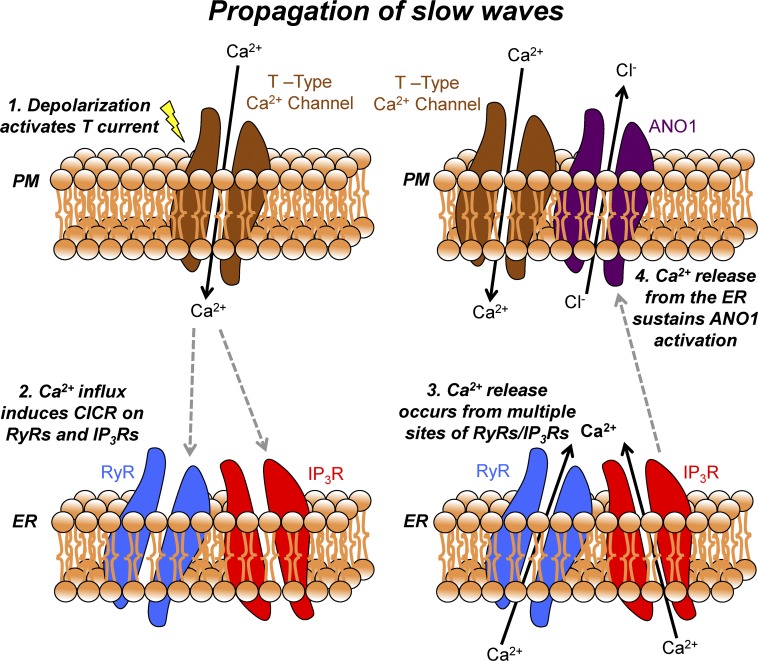Figure 12.
Mechanism of slow wave propagation via asynchronous Ca2+ release. Schematic showing the mechanism by which slow waves in the mouse small intestine propagate via asynchronous ER Ca2+ release. Electrical slow waves are propagating depolarizing events, which are actively propagated through ICC-MY networks. (1) When a slow wave propagates through the ICC-MY network, the resulting depolarization activates voltage-gated T-type Ca2+ channels on the plasma membrane. (2) Ca2+ influx from the opening of T-type Ca2+ channels allows Ca2+ ions to enter an excluded volume or microdomain and can then activate Ca2+ release channels such as RyRs (with amplification from IP3Rs) on the membrane of the ER, possibly via a CICR mechanism. (3) Multiple sites of RyRs/IP3Rs are located across multiple microdomains in a given single ICC-MY, and thus Ca2+ release occurs from multiple sites. Because of the excluded volume of the microdomain, individual Ca2+ release events manifests as temporally brief events that also occur asynchronously among each other, leading to a summated Ca2+ signal from the total sites in a cell lasting ∼1 s. (4) The summated Ca2+ signal resulting from multiple Ca2+ release events is able to sustain ANO1 activation, resulting in prolonged Cl− efflux from the cell and a corresponding sustained depolarization for the duration of the slow wave plateau. RyR, ryanodine receptor; PM, plasma membrane; CICR, calcium-induced calcium release.

